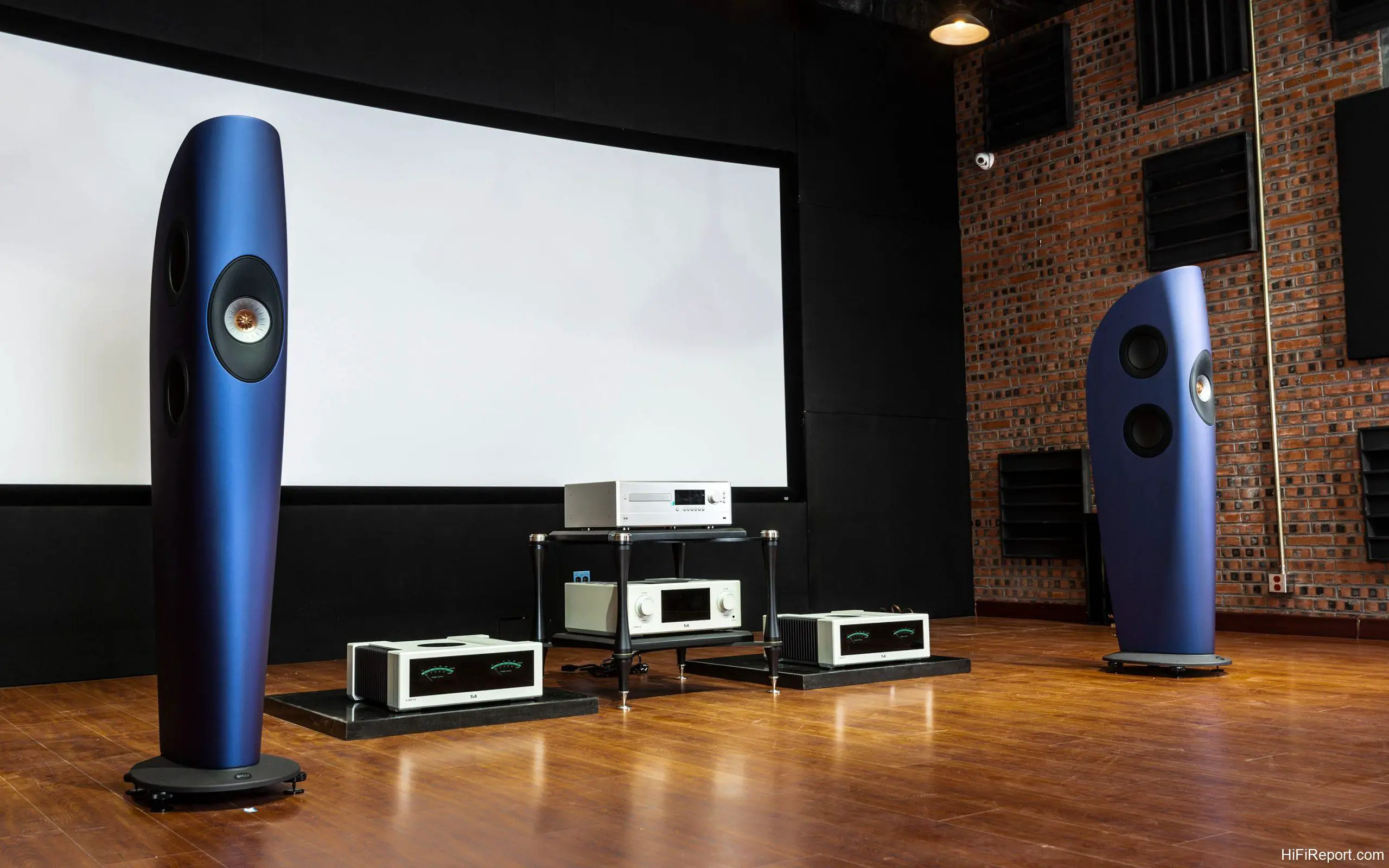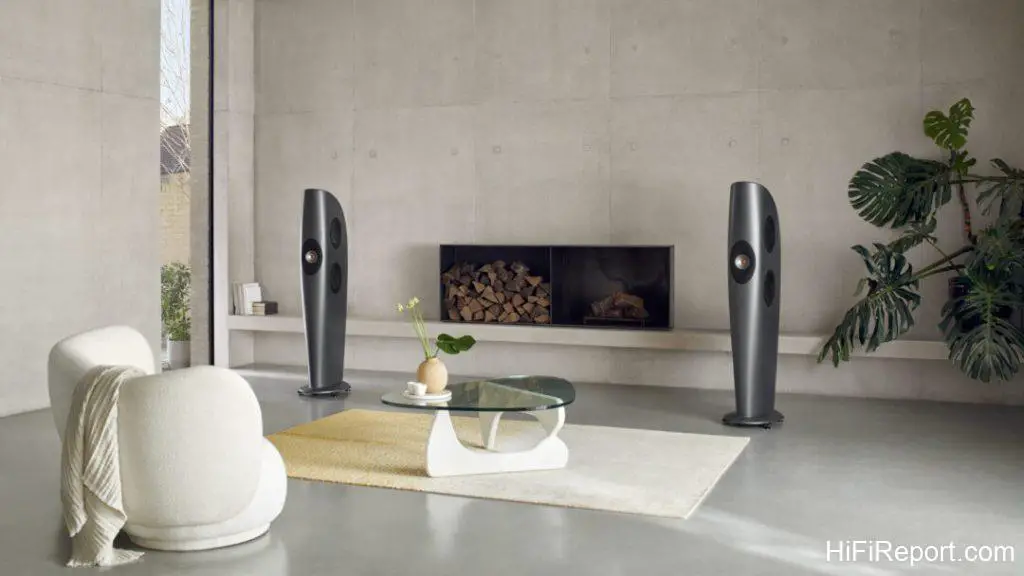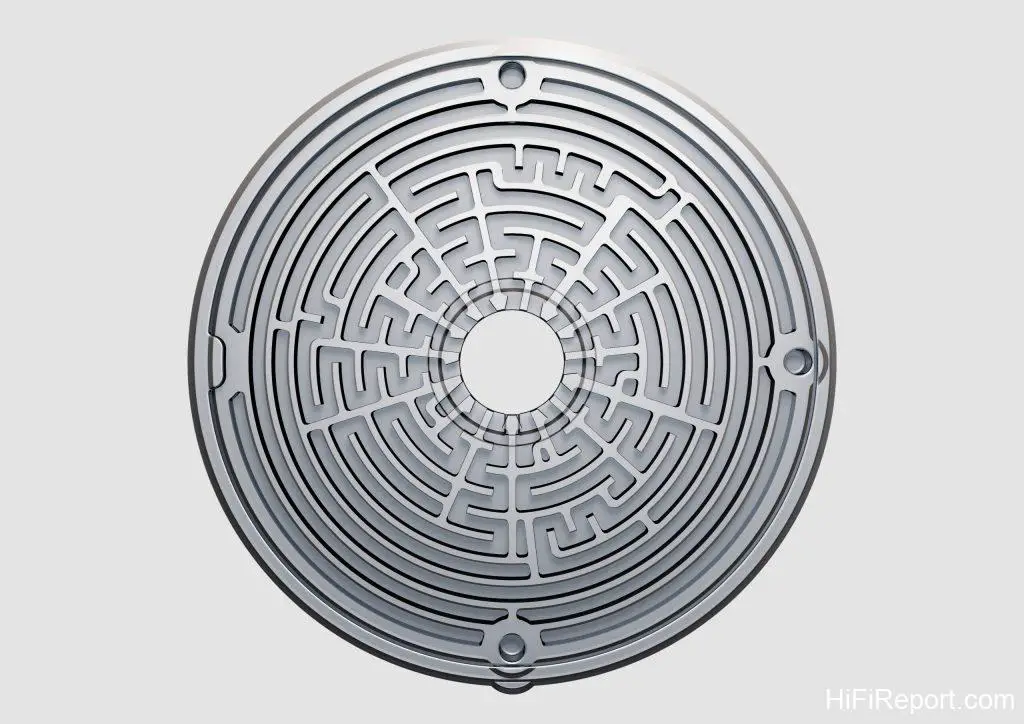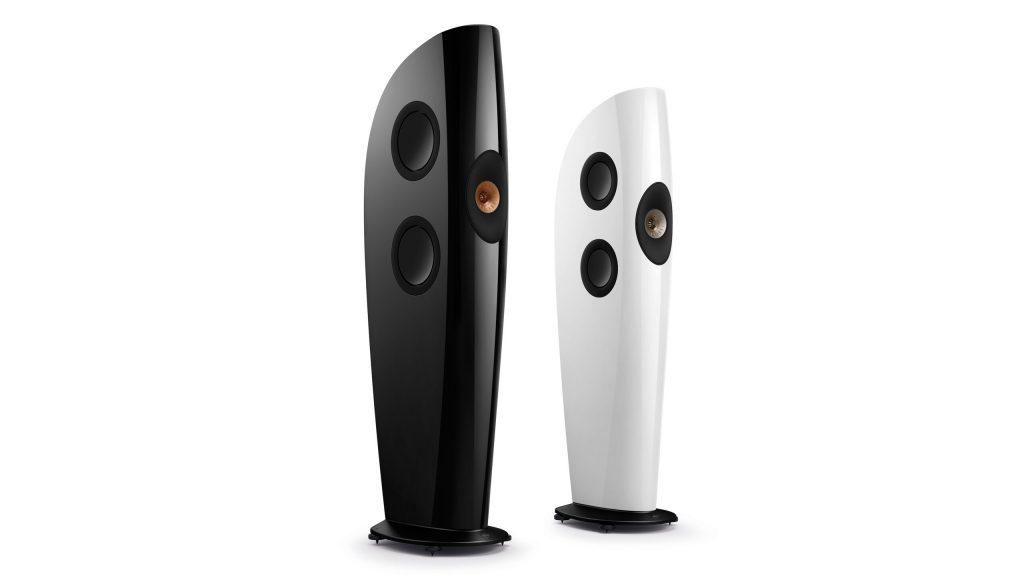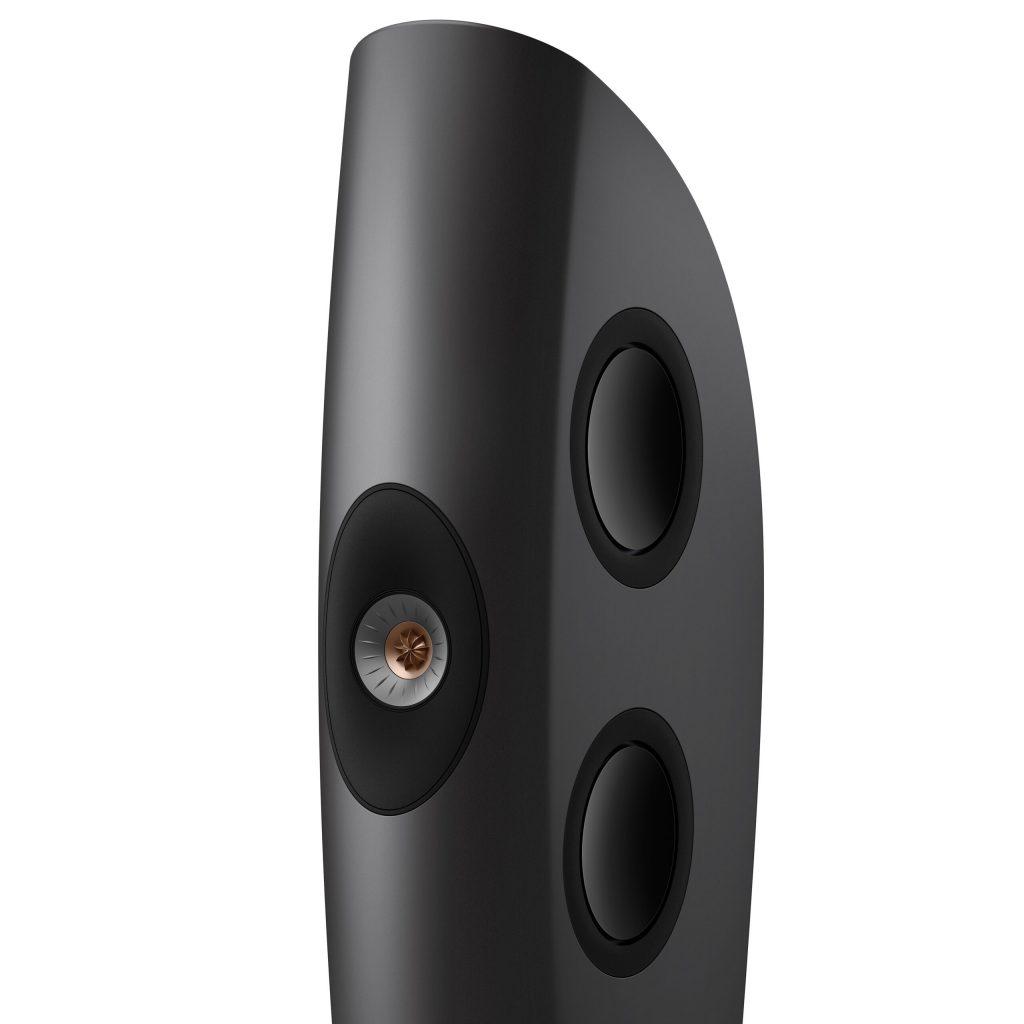KEF Blade Two Meta Review
KEF, a speaker manufacturer with over 60 years of History, continues to thrive despite changing ownership. It is a rarity in today’s market, as it isn’t a rebranded product. The key to KEF’s enduring vitality lies in its independent research and development facilities, bolstered by the group’s robust manufacturing capabilities and strong financial backing.
This synergy consistently results in impressive new products like Blade Two Meta’s recent masterpiece.
Founded in 1961, KEF celebrated its 60th anniversary in 2021. While numerous activities should have marked this milestone, the impact of the pandemic and component shortages led to scaled-down 60th-anniversary celebrations, consequently delaying the launch of new products.
In 2022, KEF finally introduced the LS60 wireless powered floor-standing speaker and the Blade One Meta and Blade Two Meta models. The Reference series also adopted the Meta designation, all of which commemorated the 60th anniversary. This suggests that future KEF speakers will also likely incorporate the Meta technology.
What is Meta?
Meta refers to Metamaterial Absorption Technology (MAT) in the context of KEF’s technology. It’s a maze-like acoustic absorption device installed on the Uni-Q driver of KEF speakers to absorb back wave reflections from the high-frequency driver. This unique absorption material and technique were developed through a collaboration between KEF and a university research group called the Acoustic Metamaterials Group based in Hong Kong.
“Meta” is derived from the first four letters of “Metamaterial.” The first product to feature Meta technology was the LS50 Meta, introduced in 2020.
The Meta device is a black circular disc with maze-like patterns on its surface. Its main function is to absorb back wave reflections from the diaphragm of the high-frequency driver for frequencies above 600Hz.
Despite its appearance, Meta is not made of foam-like materials or conical shapes typically used for acoustic absorption. Instead, it employs a clever approach based on the quarter-wavelength absorption theory. To effectively absorb a certain sound wave, the thickness of the absorbing material must be a quarter of the wavelength of that specific frequency.
For instance, if you want to absorb 100Hz (with a wavelength of approximately 3.44 meters), the absorbing material must be around 86cm thick (a quarter of the wavelength).
However, Meta isn’t made of traditional absorbing materials or conical shapes. Instead, the engineers at KEF utilized the quarter-wavelength theory by creating long channels on the Meta device. There are 30 different lengths of channels on a single Meta disc, ranging from 0.5cm to 25cm.
Each channel corresponds to a specific frequency based on the quarter-wavelength principle. This clever design allows Meta to effectively absorb back wave reflections from the high-frequency driver for frequencies within its range.
A single Meta device contains 30 channels and can absorb up to 99% of back wave reflections from the high-frequency driver’s diaphragm. This advanced technology is effective for high frequencies. Still, applying a similar approach for absorption in those ranges takes time and effort due to the significantly longer wavelengths of mid and low frequencies.
KEF might be researching ways to extend this technology to absorb mid and low-frequency back wave reflections, although such developments still need to be confirmed.
Uni-Q History
As we all know, KEF embarked on the development of coaxial driver technology before 1988. However, the challenge of overcoming the size limitations of magnets persisted due to the inadequate efficiency of magnets at the time. The separation of magnets for the high-frequency and mid-low-frequency drivers posed a volume problem.
It wasn’t until 1988, when powerful neodymium magnets began commercial application that the magnet issue for the Uni-Q coaxial driver was resolved. Overcoming numerous obstacles, KEF introduced the first-generation 1-inch high-frequency and 8-inch mid-low-frequency Uni-Q coaxial driver. This 8-inch Uni-Q coaxial driver was used in the C95 model.
In 1989, KEF released the second generation of Uni-Q coaxial drivers, with the mid-low-frequency driver reduced to 6.5 inches while retaining the 1-inch high-frequency driver. The third generation was introduced in 1994, focusing on improvements to the mid-low-frequency driver’s suspension, while the rest remained relatively unchanged.
The Model Four was the first product to use the third-generation Uni-Q driver. The fourth generation was launched in 1997, emphasizing suspension improvements further; the Q15 was the first to adopt this version.
The fifth generation Uni-Q was introduced in 2005, marking the first use of a metallic diaphragm. Before this, the Uni-Q’s high-frequency driver utilized a silk soft dome diaphragm, while the mid-low-frequency driver used a plastic diaphragm. In the fifth generation, the high-frequency driver switched to a titanium alloy diaphragm, while the mid-low-frequency driver used a 6.5-inch plastic diaphragm. The Model 201 was the first product to feature this configuration.
The sixth generation was launched in 2006, featuring significant improvements to the titanium high-frequency driver, utilizing an elliptical ring and spherical diaphragm design with ventilation holes on the back to reduce coil heat.
In 2006, the seventh generation was introduced, with the most significant improvement being the radiating pattern on the surface of the mid-low-frequency driver’s plastic diaphragm, enhancing its strength. It was first used on the egg-shaped KHT3000 model.
The eighth generation arrived in 2008, with the mid-low-frequency driver reduced to 4.5 inches, and the most notable enhancement is the addition of an orange petal waveguide on the high-frequency driver. This was first applied to the egg-shaped KHT3005SE.
The ninth generation saw significant improvements to the mid-low-frequency driver’s diaphragm, utilizing a lithium-magnesium-aluminum composite material and a radial reinforcement made from liquid crystal polymer. The Blade model was the first to adopt this technology. Subsequently, the high-frequency and mid-low-frequency drivers of Uni-Q units employed metallic diaphragms.
The tenth generation Uni-Q was introduced in 2010, featuring improved petal waveguides, a wavy suspension for the mid-low-frequency driver, and a continued size of 6.5 inches. The Q300 was the first product to utilize this version.
The eleventh generation, launched in 2014, focused on improving the connection between the voice coil and diaphragm, along with other detailed enhancements. Additionally, the mid-low-frequency driver size was reduced to 5 inches. The Reference 5.5 R3 was the first product to feature this configuration.
In 2018, the twelfth generation Uni-Q was introduced, with sound-absorbing damping material between the high-frequency and mid-low-frequency drivers. The R11 was the first product to incorporate this enhancement. In 2020, KEF introduced the twelfth generation Uni-Q with MAT sound-absorbing design, with the LS50 Meta being the first product to feature this technology.
Uni-Q Meta Advancements Over the years, Uni-Q has seen continuous improvements. So, what enhancements does the 12th generation Uni-Q Meta bring? Here are the key improvements:
- The 5-inch aluminum alloy midrange driver features an extended suspension stroke.
- Vibration-absorbing material is placed between the frame and magnet assembly to prevent mutual interference.
- The midrange driver’s magnet assembly includes a copper ring (Faraday ring) to reduce inductance variation caused by voice coil movement, minimizing distortion.
- The gap between the 1-inch aluminum alloy tweeter and midrange driver has been filled with sound-absorbing material.
- The opening angle of the midrange driver’s diaphragm has been optimized to enhance the dispersion of high-frequency sound waves.
- The Tweeter Dome has been improved.
- The patented petal-shaped sound wave diffuser has been enhanced.
- Metamaterial Absorption Technology (MAT) has been integrated, absorbing 99% of high-frequency diaphragm back waves.
While numerous improvements have been made to the Uni-Q driver, let’s explore the enhancements to the low-frequency driver:
- Damping material has been introduced between the diaphragm and voice coil, allowing a transition from high-slope to low-slope crossover filters.
- Airflow outlets have been added between the frame, voice coil, and diaphragm, enabling rapid dissipation of the low-frequency driver’s diaphragm back waves.
- Back-to-back installation offsets the kinetic energy of two low-frequency drivers, reducing vibrations during motion and minimizing cabinet vibrations.
Through years of refinement in both the Uni-Q and low-frequency drivers, the Blade’s horizontal dispersion angle has expanded from the original 130 degrees to an impressive 180 degrees. If these measurements hold, the accomplishment is indeed remarkable.
Design of The KEF Blade Two Meta
After delving into the significant evolution of Meta and Uni-Q, let’s turn our attention to the show’s star, Blade Two Meta. KEF embarked on developing the first Blade iteration as early as 2009, collaborating with the New York-based design firm ECCO and designer Eric Chan. The design drew inspiration from the 1923 sculpture “Bird In Space” by modernist sculptor Constantin Brancusi (1876-1957).
Constantin Brancusi, a Romanian artist predominantly active in France, was not only a sculptor but also a painter and photographer. The Blade’s form resembles a graceful leaf, but KEF named it Blade and introduced it in 2011.
As far back as April 2007, at the Milan Furniture Fair in Italy, KEF showcased its most iconic Muon flagship speaker (designed by renowned designer Ross Lovegrove). By examining the bold designs and material application in the Muon and Blade, it is evident that although KEF is a seasoned speaker manufacturer, its products are consistently innovative, youthful, and teeming with technological advancements.
After many years since its initial launch, Blade has finally received an update with the introduction of Meta technology. Upon close examination of the Blade Two Meta’s exterior, it boasts a sleek, streamlined cabinet crafted from composite materials. This type of cabinet shape cannot be fashioned from traditional MDF or aluminum sheets. The cabinet likely involves:
- Creating two molds.
- Filling them with composite material to shape the form.
- Incorporating internal reinforcement ribs during molding.
- Subsequently, bonding the two cabinet pieces together.
Even when scrutinizing it up close, it’s challenging to identify any seams, possibly due to the subdued lighting.
Blade Two Meta stands at a height of 1,461mm, a width of 338mm, and a maximum depth of 475mm. The entire structure lacks right angles and symmetric balance, and its streamlined design can be likened to a “Shilin knife,” an iconic blade in Taiwan. The widest frontal section of Blade Two Meta accommodates the Uni-Q coaxial driver and the shallow waveguide horn.
There are two 6.5-inch low-frequency drivers on each side, with the upper and lower pairs independently mounted within the cabinet to prevent mutual interference. These two sets of back-to-back low-frequency drivers are closely positioned, negating the kinetic energy of piston motion, thereby reducing vibrations within the cabinet and creating a spherical sound wave dispersion.
What advantages does this design offer? In practical usage, one can observe that Blade seemingly disappears within the soundstage, creating an impressive soundstage, which aligns with KEF’s “Single apparent source” concept – a pioneering innovation in the world of speakers. Generally, for larger spaces, Blade One is recommended, while Blade Two suits smaller environments.
The rear of Blade Two Meta features upper and lower low-frequency ports for reflection. The speaker terminals appear to consist of three sets for high, mid, and low frequencies, but in reality, the central set is not for speaker connections but for tightening or loosening screws. The screws must be loosened for Bi-Wire connections, while the screws should be tightened for standard single-wire connections.
Sound Performance
Once everything was in place, I began playing music, starting with the popular track “Hold My Hand” by Lady Gaga from “Top Gun Maverick.” I started with a relatively low volume and was surprised by the robust sound this “slender” speaker could produce. However, I still needed to reach my testing threshold, so I increased the volume and was met with a powerful, energetic, spicy, enjoyable rendition.
Upon close listening, I couldn’t detect any distortion, branching, or chaos in the sound, showcasing the Blade Two Meta’s ability to handle substantial volume. The specifications state that Blade Two Meta can reach a sound pressure level of up to 116dB, which seems accurate. Blade Two Meta’s sensitivity is only 86dB, but with the Chord SPM 1050MK2 delivering 200 watts per channel, pushing it to its limits should pose no issue.
Regarding mid-range vocals, Blade Two Meta offers a remarkably neutral performance, a hallmark of KEF speakers. The resonating thud of a bass drum and the richness of the bass are both full-bodied and quickly controlled. In this expansive space, Blade Two Meta fills it with sound waves, displaying impressive substance without sounding thin.
The soundstage presentation is Even more impressive; Blade Two Meta can blend into the environment, allowing visual attention to focus solely on the soundstage’s arrangement of instruments and vocals. Vocals float in space, sounding sweet and polished without any dryness. The punchy impact of the snare drum carries weight and intensity, paired with the tender guitar solos, resulting in an exceptionally engaging musical experience.
Likewise, the sense of volume from the bass drum and bass notes is substantial, surpassing the expectations set by Blade Two Meta’s graceful leaf-like form.
Blade Two Meta’s sound is crisp and dynamic without being aggressive. Listening to “Drifftin’ Man” by the Nils Lofgren Band, the twang of steel-string guitars fills the air with a crispy aura that avoids being invasive or pressuring to the ears. This sense of listening comfort likely ties to the speaker’s inherently low distortion.
Blade Two Meta’s delicate and nuanced violin tones are well-rounded and mellifluous, possessing an inward character rather than an outward projection. While it might not be overtly glamorous, it retains a balance between subtlety and sweetness, making it a pleasure to listen to. When listening to Itzhak Perlman’s performance of the Yentl film score in “Can You Hear Me,” the violin’s notes are soothing and pressure-free.
It’s like comparing a dazzlingly beautiful woman with a more understated and enduring beauty; I would choose the latter.
Blade Two Meta balances the high, mid, and low-frequency ranges harmoniously. This balance became evident as I listened to chamber music pieces. For instance, when I played “5 Bagatelles” from the Moreau family album “A Family Affair,” performed by a quartet consisting of cellist Edgar Moreau and his siblings (two violinists and a pianist), the harmonious interplay of the two violins was exquisite, the cello’s plucking was authentic.
The piano naturally complemented the ensemble, creating a beautifully balanced musical expression with a touch of sweetness and radiance.
When I listened to Christian Li and the Melbourne Symphony Orchestra’s rendition of Vivaldi’s “Four Seasons,” Blade Two Meta demonstrated excellent bounce and musical vitality. Although recorded at a young age, Christian Li’s performance exudes remarkable maturity and skill, making him a true violin prodigy.
The recording of this piece boasts dynamic richness and power, yet Blade Two Meta manages to convey the music with a luscious sweetness. She doesn’t sound piercing or aggressive, leaving behind a delightful sense of mellowness.
Continuing with the music exploration, I listened again to Mendelssohn’s Symphony No. 3, conducted by Thomas Dausgaard and performed by the Swedish Chamber Orchestra. This piece exudes vibrant energy and full-bodied liveliness. The four back-to-back low-frequency drivers of the Blade Two Meta showcase immense kinetic force, propelling the entire orchestral low end with a power akin to a sports car’s engine. Frankly, in the past, when I listened to speakers like the LS50, which utilize a Uni-Q driver, while the low-frequency performance had a natural decline, it only partially achieved this level of energy. Moreover, pushing the volume to such high levels was a challenge.
This is because a single Uni-Q driver handling the entire frequency range has its limitations regarding low-frequency handling capacity, lest it introduces distortion. However, with the Blade Two Meta’s ingenious division of mid-bass and sub-bass frequencies below 450Hz among its four low-frequency drivers, the Uni-Q’s ability to handle frequencies above 450Hz significantly boosts.
This newfound capability allows the Blade Two Meta to handle high volume levels without hesitation. Hence, you can confidently crank up the volume for orchestral performances.
Next, I immersed myself in Sibelius’ Symphony No. 3, conducted by Klus Makela and performed by the Oslo Philharmonic Orchestra. The first movement immediately highlights the Blade Two Meta’s control over low frequencies, evident in the orchestra’s elastic low-frequency articulation.
The overall orchestral soundstage is incredibly expansive, a testament to the foundation laid by ample low-frequency energy. Not only does the low-frequency performance excel, but the string section also presents layers of thickness, not a mere thin veneer. Examining the holistic performance of these two symphonies, it’s evident that the Blade Two Meta excels in string articulation and balances the brass and woodwind sections with a rich depth and instrument timbre. This underscores the exceptional performance of the Uni-Q coaxial driver.
Lastly, I delved into the score of “Curse of the Golden Flower,” specifically the track “End of the War,” composed by Shigeru Umebayashi. Right from the outset, the resonant, impactful beats of the bass drum, coupled with enigmatic male vocals, immerse the listener.
The Blade Two Meta articulates every drum stroke distinctively, with a resounding cohesiveness that remains distortion-free. As the composition progresses, the bass drum’s size increases, its range plunging into lower depths, yet the Blade Two Meta capably shoulders this burden, showcasing its excellence. This experience reiterates the capability of the four individual drivers, making them versatile for any genre of music.
Conclusion
KEF is a distinguished loudspeaker manufacturer boasting high technical expertise. Their confidence shines through in their willingness to disclose harmonic distortion data, offering a glimpse into their self-assuredness. They produce exceptional drivers and fearlessly experiment with various materials and shapes for cabinet design, with Blade Two Meta being a standout creation. Although I couldn’t dissect the exact impact of Meta during my experience with the Blade Two Meta, the undeniable fact remains that its overall performance is outstanding.
The KEF Blade Two Meta seamlessly blends into any decorative space style, regardless of size. Whether in a grand or modest room, it harmonizes with its surroundings. Particularly noteworthy is its ability to vanish into the air while playing music, avoiding any sense of auditory intrusion, a trait many other speakers lack. If you have a substantial budget and are considering a speaker purchase, the KEF Blade Two Meta should be at the top of your priority list.
Specifications
- Design:
- Three-way bass reflex
- Single apparent source
- Drive Units:
- Uni-Q driver array:
- HF: 25 mm (1 in.) aluminum dome with MAT
- MF: 125 mm (5 in.) aluminum cone
- Bass units:
- LF: 4 x 165 mm (6.5 in.) aluminum cone, force canceling
- Uni-Q driver array:
- Frequency Range:
- Free field (-6dB): 30Hz – 45kHz
- Typical in-room bass response (-6dB): 25Hz
- Frequency response (±3dB): 33Hz – 35kHz
- Crossover Frequency:
- 450 Hz, 2.2 kHz
- Amplifier Requirements:
- 50-400W
- Sensitivity (2.83V/1m):
- 86dB
- Harmonic Distortion:
- 2nd and 3rd harmonics (90dB, 1m):
- <0.5% 40Hz – 100kHz
- <0.2% 200Hz – 2kHz
- <0.1% 2kHz – 20kHz
- 2nd and 3rd harmonics (90dB, 1m):
- Maximum Output (SPL):
- Peak sound pressure level at 1m with pink noise: 116dB
- Impedance:
- 4 Ω (minimum 3.2 Ω)
- Weight:
- 35.5 kg (77.8 lbs.)
- Dimensions (with plinth) – H x W x D:
- 1461 x 338 x 475 mm (57.5 x 13.3 x 18.7 in.)
- Standard Finishes:
- Piano Black/Copper
- Piano Black/Grey
- Frosted Blue/Blue
- Frosted Blue/Bronze
- Charcoal Grey/Red
- Charcoal Grey/Bronze
- Racing Red/Grey
- Arctic White/Champagne
- Downloads:
- Information Sheet
- Manual
- White Paper
